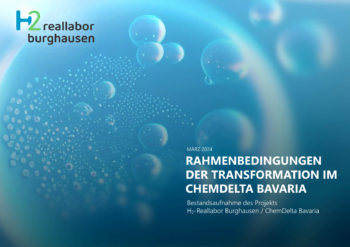Electrification decarbonization efficiency in Europe – a case study for the industry sector
Published and presented at the 42nd IAEE International Conference in Montréal, Canada
Context and goal of the analysis
In a variety of German energy system studies, the substitution of fossil fuels through electricity on the energy demand-side (electrification) has been displayed as a key deep decarbonization measure. Also possible system interdependencies have been analyzed on a national level. Such national analyses however do not consider possible changes in the energy system composition that could occur due to decarbonization through electrification in neighboring countries. Neglecting these developments could lead to false conclusions about the resulting system effects in a European context, especially if extreme electrification rates are assumed. In order to assess the effects of a simultaneous increase in electricity demand in several European countries, an overview of the costs and potentials of electrification in these countries is required. Another key factor is the position of possible additional electrical loads in relation to the renewable energy sources wind and solar power as well as the grid. In this context especially large industrial loads are relevant. It is the aim of this paper to provide an overview of the electrification costs and potentials for Germany and its neighboring countries. Furthermore, a consistent and regionalized European electrification scenario is determined for the industry sector in NUTS‑3 resolution.
Evaluating electrification measures – methodology and assumptions
Figure 1 shows the three-step methodology used to derive electrification costs and potentials as well as the regionalization of industrial loads.

European energy application balances and electrification potential
Energy application balances build the basis for the development of demand-side scenarios and are consequently the starting point for deriving the theoretical electrification potential (TEP). For Germany, reliable statistical data exists, which shows the FEC by industry branch, energy carrier, application and sector. This however is not the case for most other European countries. To achieve a consistent starting point for the development of demand-side electrification scenarios, national energy application balances are derived. These build the basis for calculating the TEP shown in Figure 2.

Electrification costs and decarbonization efficiency
The electrification potential shown in Figure 2 poses the starting point for deriving electrification costs as well as the electrification decarbonization efficiency.
The electrification cost methodology is based on the relevant costing approach. Relevant costing is a total cost approach which includes only those cost components which differ between two alternatives. In this case the electrical alternative technology is compared to a fossil reference technology. Costs are expressed as annualized differential cost of electrification in a country, for a certain application and
Besides high costs, high electrification rates result in increased stress for the energy system, as transmission capacities are utilized to their limit and additional variable renewable energy capacities are required to provide emission free electricity. From a technical system perspective, it is consequently advisable to pursue electrification measures which reduce emissions, but also to minimize the additional electricity consumption. In order to analyze this effect for a broad set of electrification options a new measure termed “electrification decarbonization efficiency” is introduced.
Electrification decarbonization efficiency It is defined as the additional electrical FEC per mitigated ton of CO2.
To provide the basis for evaluating the effects of electrification on the energy system, additional electrical loads are regionalized in NUTS-3 resolution. Basis for the regionalization of industrial final energy consumption are the European emission trading system (EU‑ETS), the European pollutant transfer registry databases (E‑PRTR), several additional industry branch specific databases as well as employee and population data.
Results for a “Low-hanging fruits” electrification scenario in Europe
In the analyzed “Low-hanging fruits” electrification scenario low-temperature heating and hot water and process heat electrification measures are analyzed with respect to costs, emissions and final energy consumption, electrification decarbonization efficiency and the location of additional loads.
Figure 3 depicts energy related CO2 emissions before (2014) and after electrification (2050) and the absolute additional electrical FEC in 2050. The only country in which some electrification measures lead to an increase in CO2 emissions in 2050 is Poland. The reason for this is the emission coefficient of power generation in 2050 (~220 gCO2/kWh), which leads to higher emissions from electrification measures compared to the reference technologies, despite efficiency gains. Across all electrified industry branches and applications in Poland, electrification leads to an emission reduction of 55 % compared to 2014. In Norway, CO2 emissions drop as far as 99.7 % for the analyzed applications.

Depending on the country, industry branch and reference energy carrier, the additional electrical FEC per ton of avoided CO2 can vary drastically for the analyzed electrification measures. Figure 4 shows the electrification decarbonization efficiency. In most countries, the median decarbonization efficiency is approximately 2 MWh/tCO2.

Figure 5 shows the relative increase of electrical FEC in NUTS‑3 resolution for all analyzed countries.

The regionalization of industrial loads shows that. Certain regions such as the south west of the United Kingdom experience relative increases of electrical final energy consumption after electrification of up to 40 %.
Weitere Informationen:
- Info: FfE electrification profiles – status quo and potentials of electrification in Europe
- IEWT 2017 – Dekarbonisierung durch Elektrifizierung – Eine Merit Order der technischen Potenziale
- Potentials of Variable Renewable Energy Sources and „Low-Hanging Fruits“ Electrification in Europe
- Anwendungsseitige Merit-Order-Kurven für synthetische Brennstoffe im deutschen Energiesystem
- Electricity consumption of heat pumps for space heating and hot water in the building sector – A comparison between European Countries


